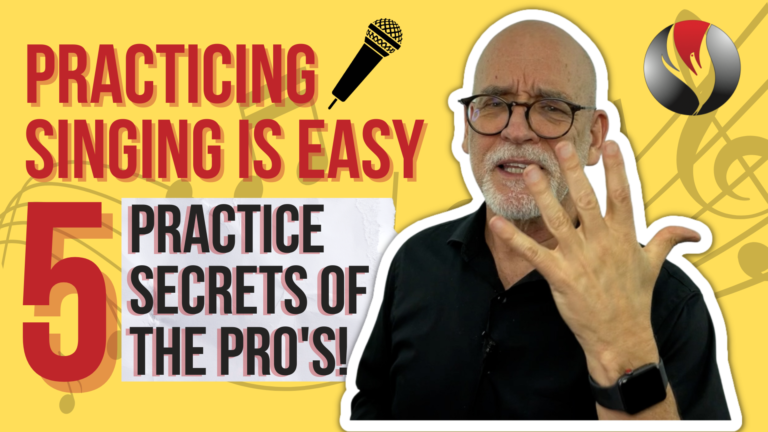This video will provide singing tips that explain what is happening with your vocal cords, vowels and air blow when your vocal type is Pulled Chest- High Larynx and how to fix it!
In our last several episodes, we’ve talked about how balanced vocal cords, vowels and air blow produce a balanced voice which produces great singing.
What if your vocal type is Pulled Chest-High Larynx? What’s out of balance? What’s the physical cause? What’s the effect on the sound of your voice? How do you fix it?
The answers can help you improve your singing dramatically!
Great singing comes from proper physical function of the vocal cords, vowels and air blow. When these are balanced and you connect emotionally with the audience, great singing is the result.
Singing Tips: Pulled Chest-High Larynx-What’s Out of Balance? What Does it Sound Like?
Let’s start talking first about Pulled Chest.
Vocal Cords Out of Balance: Usually the vocal cords have failed to gradually eliminate their mass as you sing higher. They’re too thick and heavy.
Vowels Out of Balance: As the pitch goes higher, through the first bridge and into the head voice, the vowels open too wide and the words splat. The resonance is not able to shift into the head. The chest resonance is being pulled up to pitches that should be head resonance.
Air Blow is Out of Balance: Air blow is too strong, forceful and excessive. The vocal cords have to over tighten. Or air blow may be too weak which starves the cords of adequate air flow.
When cords, vowels and air blow are out of balance, the external muscles squeeze and the Larynx is pulled up.
This results in a sound that is: Too loud, often flat or sharp, and squeezed and strained. Here’s an example of pulling chest. [Demo]
Let’s talk about High Larynx
Vocal Cords Out of Balance: Cords may have too much tension or they may be too loose. If they are too tense, external muscles add more tension which pulls the larynx upward. If too loose, they allow too much air to escape. This causes external muscles to start squeezing to help strengthen the sound which pulls the larynx up.
Vowels Out of Balance: The vowels are spreading wide on many pitches which encourages external muscle tension and the larynx is pulled up. Resonance overtones are limited or damped.
Air Blow is Out of Balance: Usually it’s too much air blow which causes external muscle tension and pulls the larynx upward.
When the larynx is pulled higher the voice may sound: Flat, labored, tight, harsh, brassy or splatty. Sometimes it sounds thin, breathy and uneven. The tone is incomplete and suffers from missing overtones. Here’s an extreme example of high larynx. [Demo]
Singing Tips: How to Fix the Pulled Chest-High Larynx
Vocal Cords In Balance: Here’s a vocal exercise will help balance the vocal cords. You use the word “goo”. Do this on a 5-tone scale. [Demo]
Vowels in Balance: Here’s an example of vowel narrowing. You can also substitute the word “goo” as an exercise to feel what a more narrow vowel feels like in the song. Make sure to keep the vowel “oo” pure. [Demo]
Air Blow in Balance: This exercise is good for cords, vowels and air blow. It’s the bubble lip and you can substitute it in place of words to get the balance of all three. Make sure when you do that you don’t break into falsetto. If you break you can use the “goo” at medium to soft volume. [Demo]
Pulled Chest-High Larynx is just one of the several vocal types. Do you know your vocal type? As you can tell from our discussion today, it’s not about your vocal range. The vocal type reveals what you tend to do when you sing. It may show up as an imbalance in your cords, vowels or air blow.
Visit PowerToSing.com and take the vocal test, which I call the PowerTest. Take the quiz and discover your vocal type. Then go to the Knowledge Center and watch the videos about your vocal type.
The exercises to download are designed to help you balance your voice so you can improve immediately.
I’m Chuck Gilmore with Power to Sing. You can sing higher with beauty, confidence and power.
I’ll see you inside the next video.










Responses